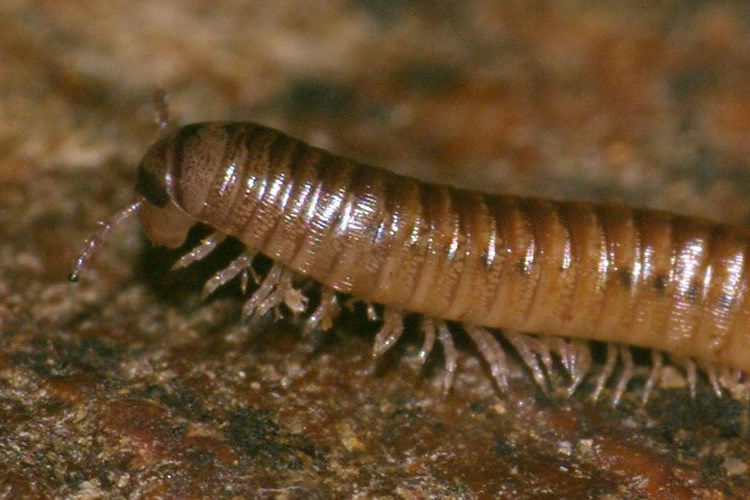Cylindroiulus punctatus (Leach, 1816)
Common name
Status:
GB IUCN status: Least Concern
ID Difficulty
Identification
This common dead wood millipede is readily identified by the combination of its pinkish-brown colour and prominent club-shaped projecting telson (i.e. with a thickened rounded tip). This telson shape is otherwise only seen in Cylindroiulus londinensis, a very robust, almost black, millipede.
This species is a known host for the ectoparasitic fungus Rickia laboulbenioides (Gregory, 2021). See image.
Distribution
This is the most common and widespread species in Britain and Ireland.
Cylindroiulus punctatus has an Atlantic distribution from northern Spain to southern Scandinavia. Temperature may be a key limiting factor. Low winter temperatures probably limit its northern and eastern distribution. In southern France it becomes much harder to find, possibly due to high spring and summer temperatures (Kime, 1999).
Habitat
It is found in most habitats but analysis of the habitat data suggests a very strong association with woodland and strong negative relationships with more open grassland and sand dune habitats. It is an animal of rural, semi-natural habitats rather than synanthropic sites. Elsewhere in Europe it is also typically a woodland animal (Kime, 1990a). The recording scheme habitat analysis also suggests a strong association with non-calcareous soils; something not found by Kime et al. (1992) but they did note a preference for loamy soils. There is some evidence (51% of records) of a preference for loams in Britain and Ireland also even though the habitat analysis does not suggest a strong association.
Banerjee (1967) described the seasonal migrations of C. punctatus brought about by changing temperatures. Animals move from leaf litter into decaying wood in the spring and then return to the litter in autumn, ultimately overwintering in the mineral soil if conditions are sufficiently cold.
Phenology
Blower & Gabbutt (1964) found that animals in a Devon woodland took three years to mature and females may survive and breed for several years beyond that. This means adult females may be collected throughout the year.
This species account is based on Lee (2006).
Links
MilliBase - Global catalogue of Millipedes: https://millibase.org/aphia.php?p=taxdetails&id=936097








